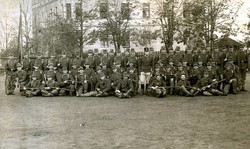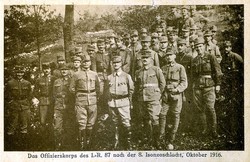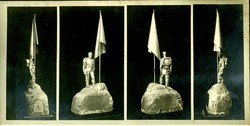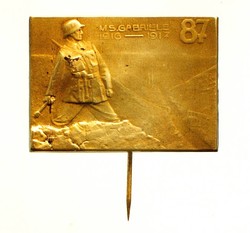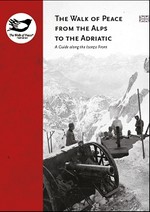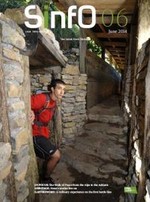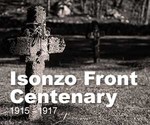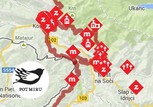The 87th Infantry Regiment
The 87th Infantry Regiment ‘Baron Succovaty’ (K. u. K. Infanterieregiment Freiherr von Succovaty Nr. 87) was established on 1st January, 1883, by merging one battalion from the infantry regiments 7, 27 and 47 and the 35th Light Battalion. The honorary patron from 1897 onwards was the infantry general Baron Eduard Soccovaty von Vezza. Its mobilisation area was Celje and its environs, Brežice, Ptuj, Ormož, Slovenske Konjice, Pohorje and Tuhinjska Dolina valley. Ethnically, it included Slovenians (95%) and Germans (5%). Slovenians remained a vast majority until the end of the First World War. The headquarters of the regiment, the commands and units of the 2nd, 3rd and 4th Battalions were in Pulj, the command and units of the 1st Battalion in Celje. The regimental colour was aquamarine. Before the First World War, it only took part in peacekeeping actions. In 1887, the 2nd Battalion monitored the cease-fire between the Greeks and the Turks on Crete and before the First World War, units of the 4th Battalion were sent to Skadar in Albania.
Units of the 4th battalion of the 87th Infantry Regiment remained in Skadar at the beginning of the First World War, August 1914, and assisted a detachment of the German marines; later they were included in the 1st Austro-Hungarian Infantry Division. In the second half of September, 1914, they fought near Višegrad and Jagodina. In 1915, the Battalion fought in the Balkan theatre, and in May, 1916, it was moved to Tyrol. The 1st, 2nd and 3rd Battalions of the 87th Infantry Regiment saw first action in Galicia, where they were defeated at the Battle of Zloczow on 26th August, 1914. At the end of 1914 and in the beginning of 1915, the battalions were stationed in the Carpathians, where they unsuccessfully mounted an attack near Regetow on 28th February, 1915. On the Doberdob plateau, in May, 1915, the 10th Battalion of the 87th Infantry Regiment was involved in fighting against Italy and, in autumn 1915, the whole regiment arrived to the Soča (Isonzo) Front from the eastern battlefields. They were moved to Tyrol only in spring, 1916. The regiment suffered heavy casualties, in the fighting from May to the autumn of 1916, and in September, it returned to the Isonzo Front and saw action in the heavy fights near Opatje Selo and Lokvica. It successfully defended Škabrijel in the 10th (12th May – 5th June, 1917) and 11th (17th August – 12th September, 1917) Battles of the Isonzo, despite huge losses in individual battalions. The Austrians thought that this was ‘the hardest fight ever fought by any unit of the Austrian army’. Individual units later fought in Italy in the Dolomites in the autumn of 1917, and the whole regiment in Piava, where it was notably successful in the offensive on 17th June, 1918. After the end of the First World War, November, 1918, the 87th Infantry Regiment was transformed into the Celje Regiment of the new Slovenian Army.
Drago Sedmak

